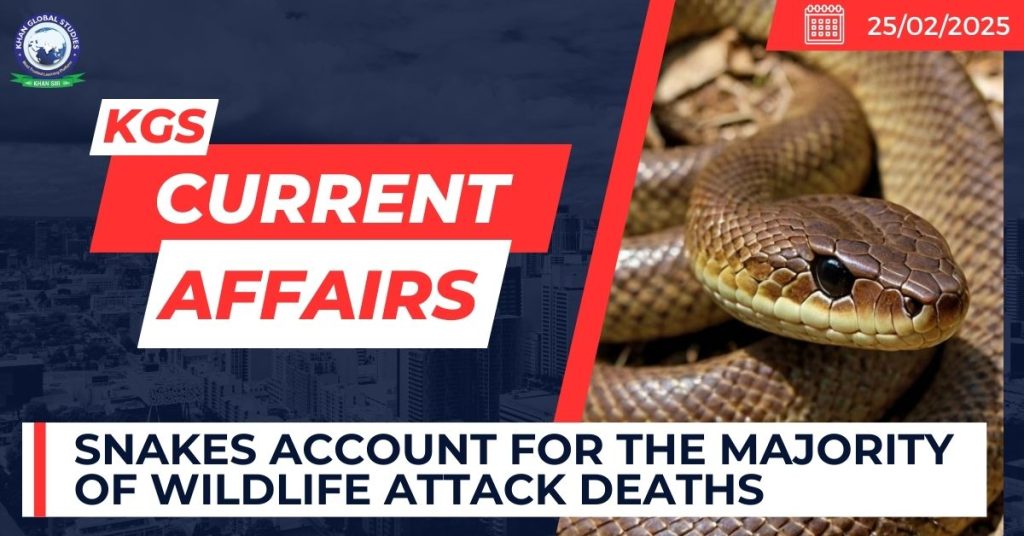Context: The Member of Parliament has requested increased funds from the Kerala Chief Minister to mitigate man-animal conflict in Wayanad, highlighting the need for measures to protect human settlements near forest areas.

- From 2017-18 to 2024-25 (till January 31), 774 people were killed in wildlife attacks in Kerala.
- 516 deaths were due to venomous snake bites outside forests.
- The remaining deaths were caused by attacks from elephants, wild boars, tigers, and gaurs.
- From 2010 to 2020, 1,048 deaths occurred from wildlife attacks, with 729 being from snakebites.
Snake Bite in India
- It is a prominent problem in rural and peri-urban areas and the high burden
- Snakebite envenoming is a potentially life-threatening condition caused by venomous snake bites, leading to severe health issues or permanent impairment if not treated promptly.
- India accounts for around 50,000 deaths from snakebites annually, which makes up half of global snakebite fatalities. Approximately 3-4 million snakebites occur each year in India.
- Only a small proportion of snakebite victims seek medical care, and the actual burden of snakebites is grossly underreported.
- According to the Central Bureau of Health Investigation (CBHI) reports (2016-2020), India records an average of 3 lakh snakebite cases annually, with around 2000 deaths.
- About 90% of snakebites in India are caused by four venomous species: common krait, Indian cobra, Russell’s viper, and saw-scaled viper.
- Polyvalent anti-snake venom (ASV), effective in 80% of cases, contains antibodies against the four major venomous snakes, but challenges persist due to a lack of trained personnel and adequate health facilities.
- There is a lack of comprehensive data on the incidence, morbidity, mortality, and socio-economic burden of snakebites in India, hindering effective mitigation planning.
Snakes as Protected Wildlife
- Under the Wildlife Protection Act of 1972, venomous snakes like king cobras and Russell’s vipers are protected under Schedule II.
- Non-venomous snakes, such as the Indian python, are protected under Schedule I.
- Other snake species fall under Schedule IV protection.
Reason of Human-Animal Conflit
- Destruction of Natural Habitats
- Urbanization and the fragmentation of ancestral properties have led to the destruction of ‘kavus’ (sacred groves), which were once safe habitats for snakes.
- Snakes have increasingly entered urban areas, coming into contact with humans more often.
- Impact of Climate Change
- Rising temperatures in Kerala are causing snakes to seek shelter in human habitats, as they are cold-blooded and rely on external temperatures to regulate body heat.
- In 2024, the Kerala Forest Department rescued 16,453 snakes from human habitats and released them into the forest.
Prevention and control of snakebites by the Government
- Launched a National Action Plan for Prevention and Control of Snakebite Envenoming (NAP-SE) in India.
- In 2020, Kerala launched the Snake Awareness and Rescue Protection (SARPA) App to raise awareness and manage snake rescue operations.
States and UTs have been instructed to include Anti Snake Venom (ASV) in their list of essential drugs to ensure its availability.

